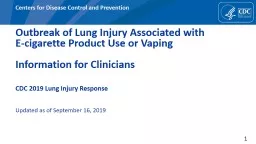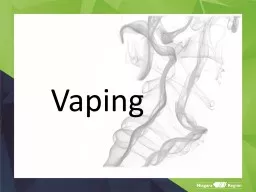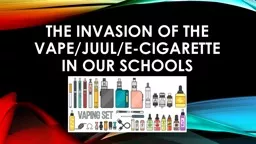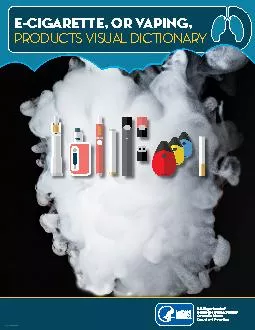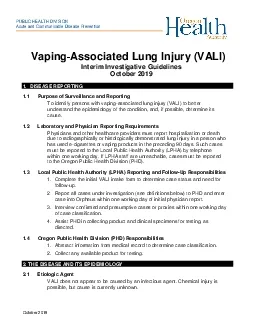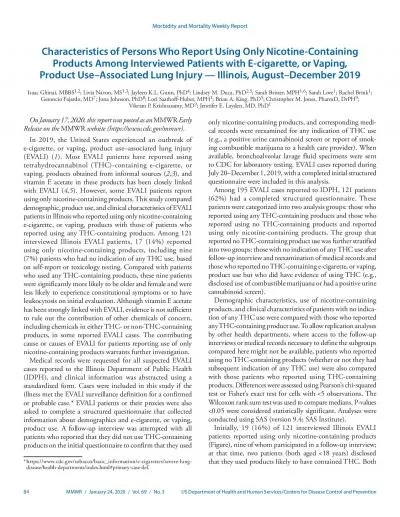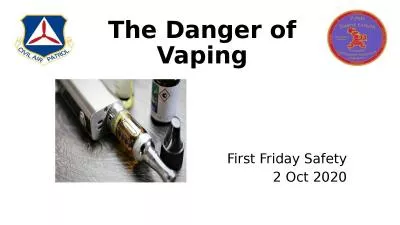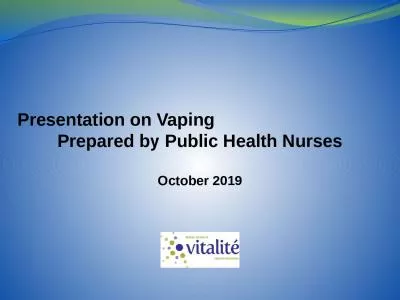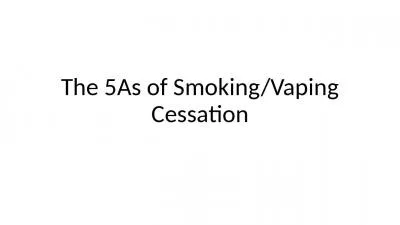PPT-Outbreak of Lung Injury Associated with E-cigarette Product Use or Vaping
Author : pamella-moone | Published Date : 2019-11-21
Outbreak of Lung Injury Associated with Ecigarette Product Use or Vaping Information for Clinicians CDC 2019 Lung Injury Response Updated as of September 16 2019
Presentation Embed Code
Download Presentation
Download Presentation The PPT/PDF document "Outbreak of Lung Injury Associated with ..." is the property of its rightful owner. Permission is granted to download and print the materials on this website for personal, non-commercial use only, and to display it on your personal computer provided you do not modify the materials and that you retain all copyright notices contained in the materials. By downloading content from our website, you accept the terms of this agreement.
Outbreak of Lung Injury Associated with E-cigarette Product Use or Vaping: Transcript
Download Rules Of Document
"Outbreak of Lung Injury Associated with E-cigarette Product Use or Vaping"The content belongs to its owner. You may download and print it for personal use, without modification, and keep all copyright notices. By downloading, you agree to these terms.
Related Documents

